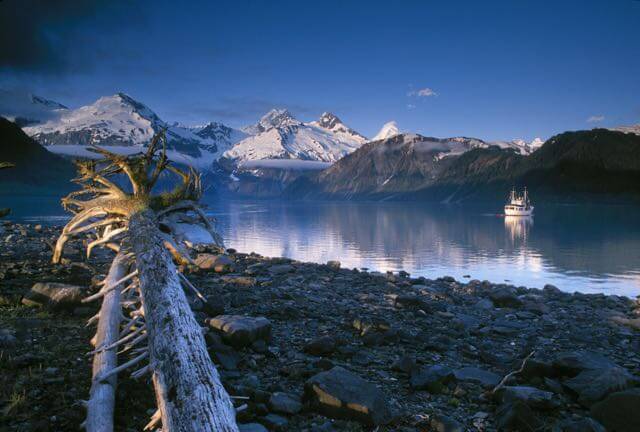 |
| Sawyer Glacier in the Tracy Arm/Ford’s Terror Wilderness Area, southeast Alaska |
 |
| The Mainland Coast Mountains of Southeast Alaska |
Geologists are still pondering why southeast Alaska is shaped the way it
is today. The variety of rock found here is somewhat of a mystery,
ranging from igneous (Mount Edgecombe near Sitka), to metamorphic (the
mainland Coast Mountains of southeast Alaska), and to sedimentary (the
limestone bluffs of Kuiu Island and Prince of Whales Island).
 |
| The Unique Ultramafic Igneous Rock of Red Bluff Bay, Baranof Island, southeast Alaska |
On Baranof Island, Red Bluff Bay presents an interesting picture. This
type of red rock (ultramafic igneous rock) is found no where else in
southeast Alaska, and is quite a site on approach to the bay. The
bright red color of the rock comes from the oxidation of the iron-rich
rock surface. Very little grows on the red rock, as the chemical
weathering of the red rock produces poor soil and stunts plant growth.
For an interesting article from the Sitka, Alaska, NPR station regarding the unique geology of southeast Alaska, please click
HERE.
A great book for additional information on the geology of Southeast Alaska is:
“Geology of Southeast Alaska: Rock and Ice in Motion” by Harold H. Stowell.




No comments:
Post a Comment